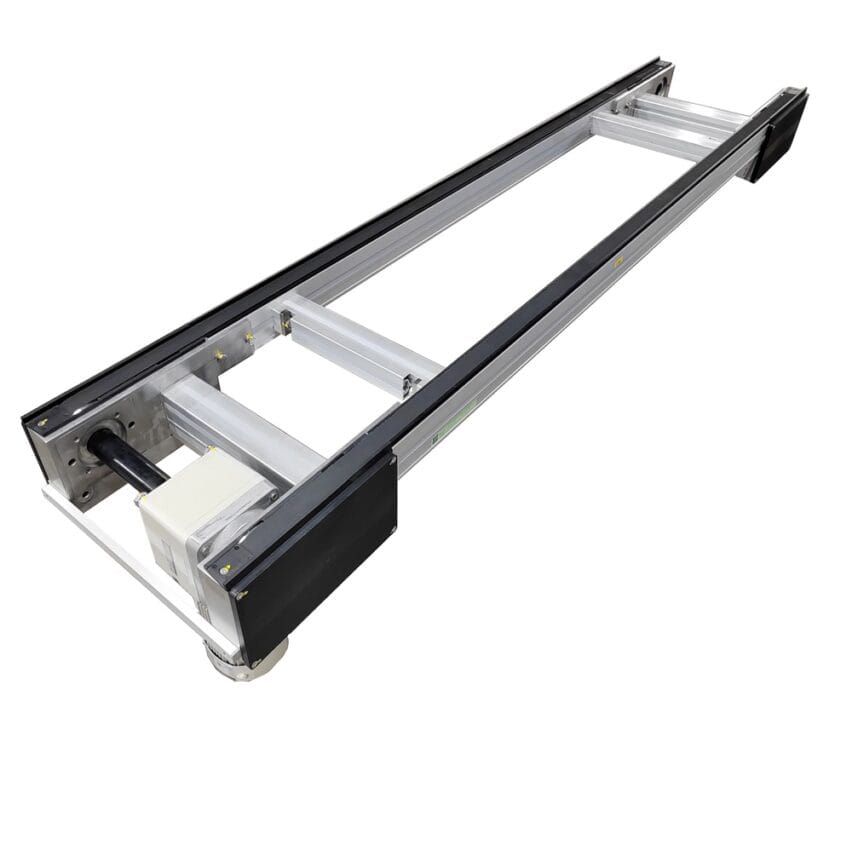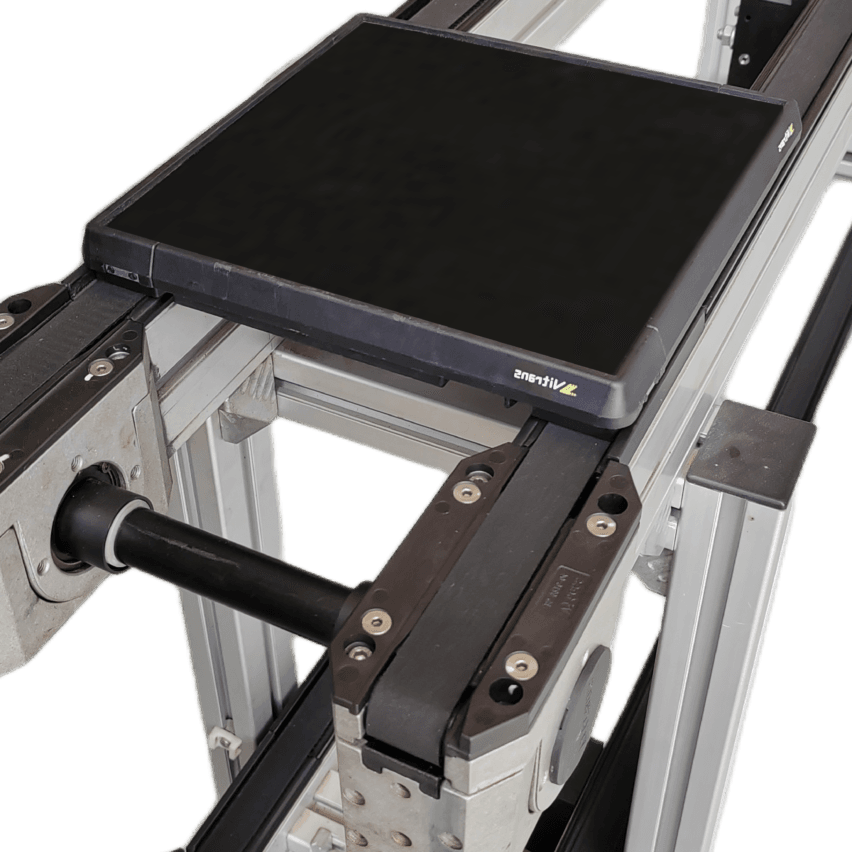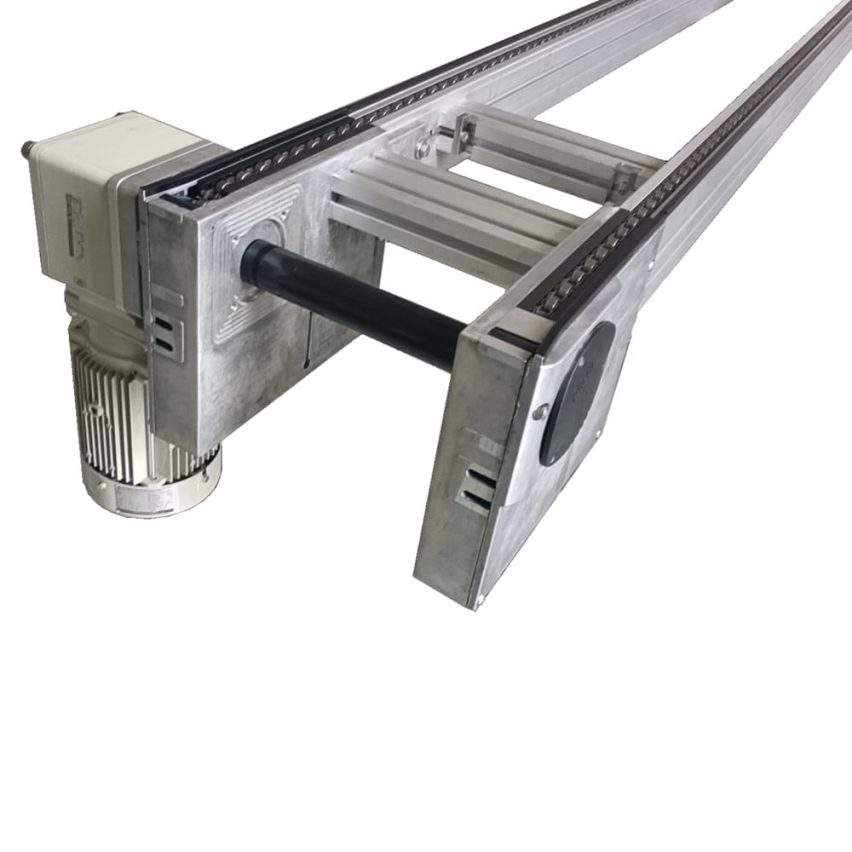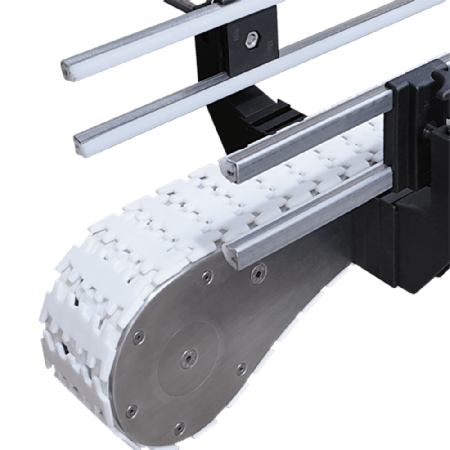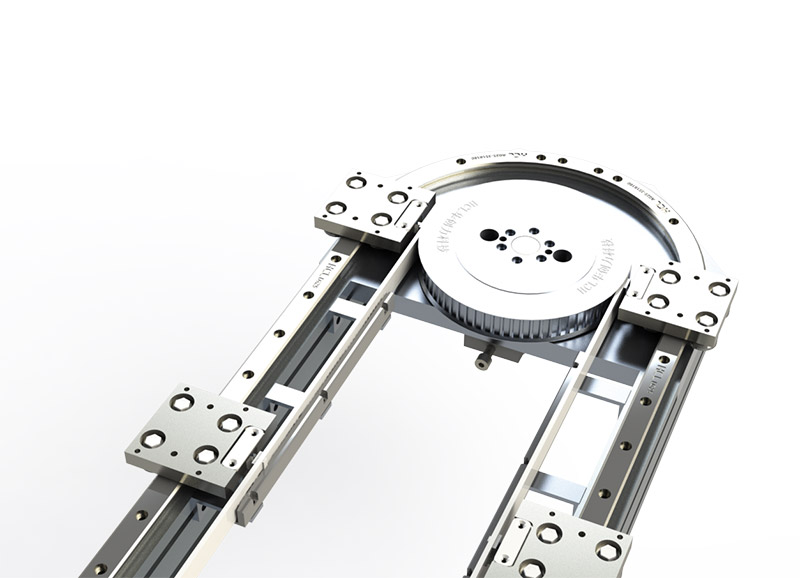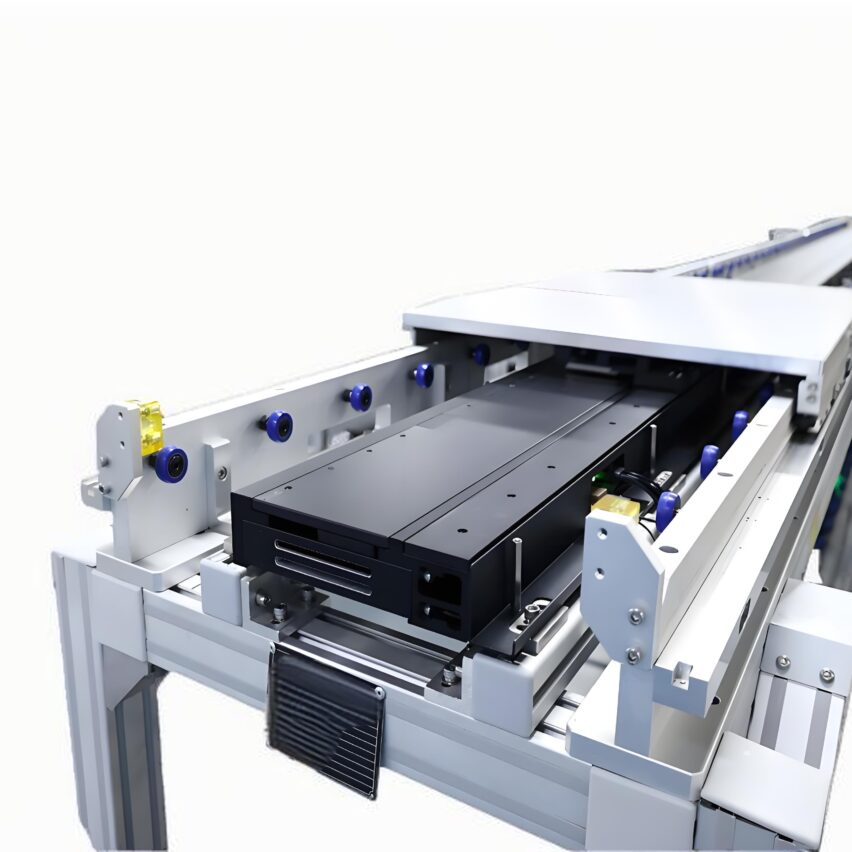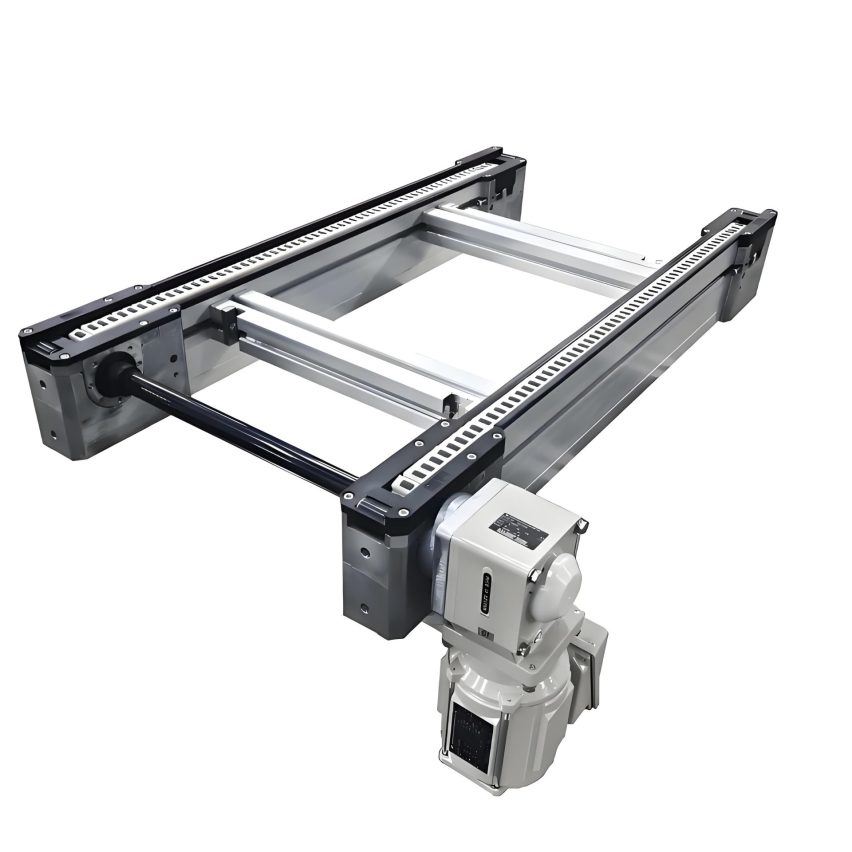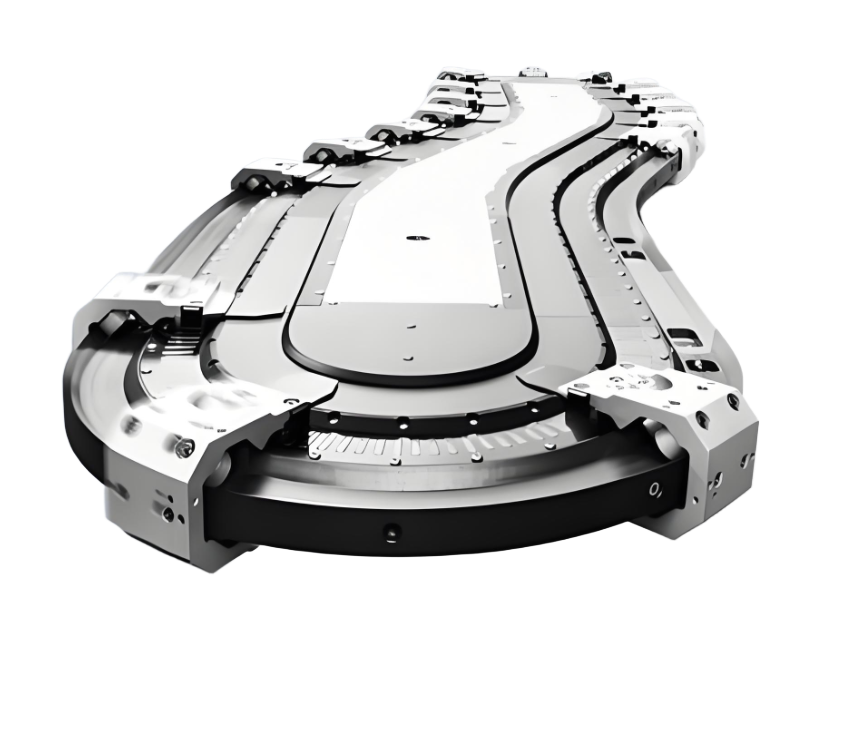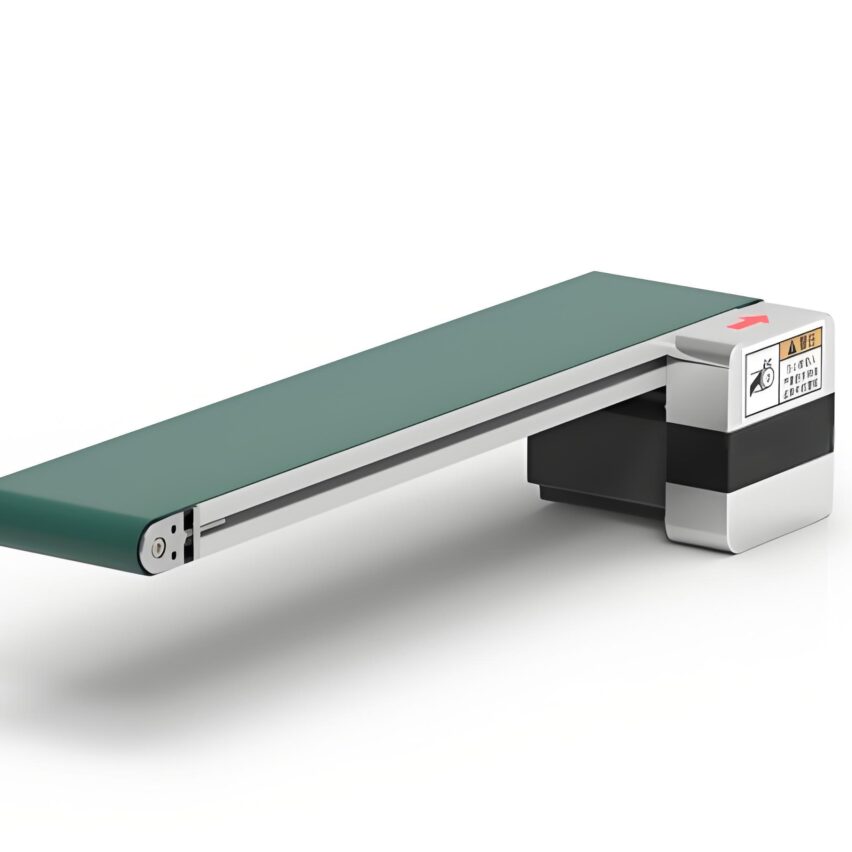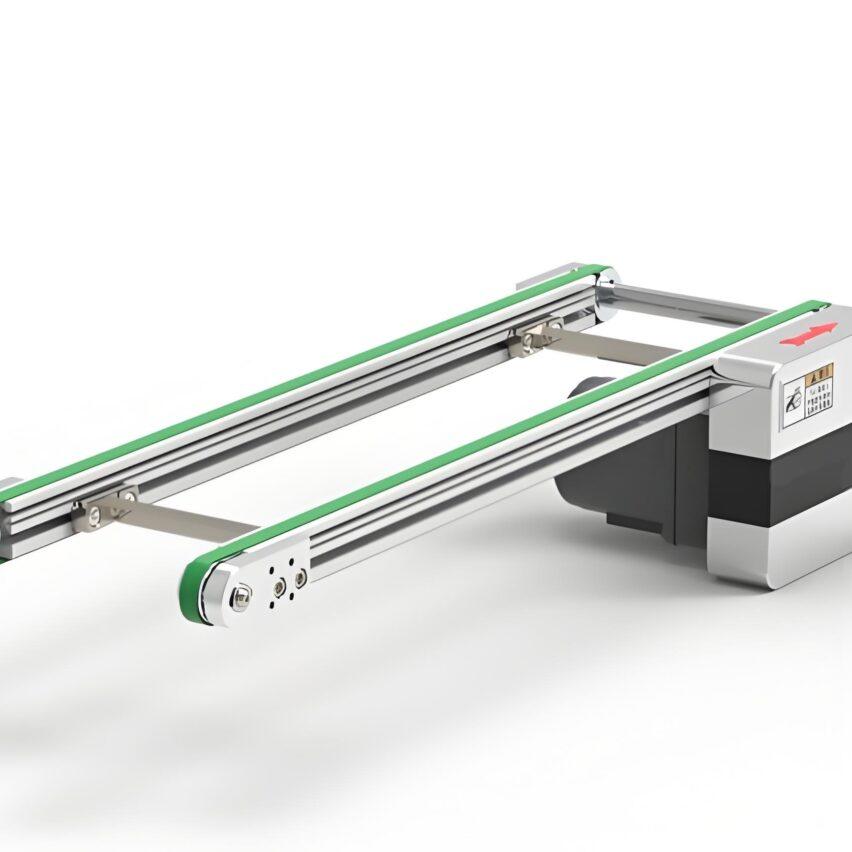Core Principle: The Mystery of Mechanical Speed Increase
The "speed doubling" effect of the speed doubling chain comes from its unique compound motion structure. When the chain advances at a constant speed driven by the motor, the roller at the bottom of the plate contacts the chain roller and generates a spinning motion. Since the diameter of the roller (D) is much larger than the diameter of the chain roller (d), according to the equationActual plate speed = chain speed × (1 + D/d)The pallet is eventually conveyed at 2-3 times the speed of the chain. For example, in a triple speed chain, the roller diameter is designed to be 2 times that of the roller, and the superimposed movement achieves a 3-fold increase in speed.
This physical speed-up mechanism avoids wasted energy -High-speed conveying with a single motor driveIt is more than 30% energy-saving than the traditional multi-motor synchronous solution. An automotive assembly line measured data show that in maintaining 18m/min chain speed, the actual conveyor speed of pallets up to 54m/min, while the positioning accuracy is stable at ± 0.5mm.
-
System architecture: Modular design for sophisticated synergies
The triple-speed chain system is like a sophisticated mechanical symphony orchestra:
- transmission coreChain size 08B/12B, nylon or steel rollers for different loads (from 50kg for light duty to 4000kg for heavy duty).
- carrier unitWorkplace boards are made of anti-static plastic wood (commonly 850 x 850 x 20mm) or aluminium alloy frames, with RFID chips embedded in the surface to achieve pallet-level data traceability.
- control systemInverter motor + photoelectric sensor + PLC constitutes closed-loop regulation, supporting 0.5-8m/s stepless speed regulation.
- positioning mechanism: Blocking cylinder with hydraulic vibration absorber, 40dB less noise during heavy load impacts
The modular design gives the system great expandability. In the case of Wei Chuang Automation, a 600-metre-long robot assembly line is passed through the10-segment independent multiplier chainSeamless connection, 90° steering and multi-layer conveying in conjunction with the jacking traverse mechanism.
-
Performance Advantage: Redefining Conveying Efficiency
The competitiveness of the Triple Speed Chain is reflected in three dimensions:
- efficiency revolution: 3 times faster than belt line, automotive engine assembly beat compressed from 120 seconds to 75 seconds.
- environmental toleranceStable operation in the temperature range of -20°C to 80°C and extended failure intervals of up to 4000 hours in dusty environments.
- economicsOpen profile construction reduces maintenance time by 70%, with only standard spanners required for spare part replacement.
Comparison test of a 3C electronic factory shows that: when carrying the same specification circuit board, the triple speed chain of theEnergy cost is only 65% of drum lineand the product turnover breakage rate was reduced from 0.31 TP3T to 0.081 TP3T.
-
Industry applications: leapfrogging from microelectronics to heavy manufacturing
The adaptability to different load scenarios makes it a "universal chassis" for industrial transport:
▎ Precision electronics field
0.5mm ultra-thin battery cell delivery in byLight duty PRC roller line + servo positioning(Accuracy ±0.02mm), with anti-static tray to avoid component damage. A mobile phone motherboard test line using this solution, the yield rate increased 12%.
▎ Automotive Heavy Industries
New energy battery PACK conveying needs to carry more than 300kg load, steel roller speed chain + friction bar design, with V-type guiding groove to ensure that the heavy-duty pallet does not run out of direction. This configuration is used in the motor assembly section of Tesla's Shanghai factory.
▎Medical cleanliness field
Stainless steel material doubling chain conveys drugs in aseptic workshop, self-lubricating bearing eliminates grease contamination and meets the requirements of GMP certification.
-
Technology Evolution: The Future Direction of Intelligent Convergence
By observing the dynamics at the forefront of the industry, I have found that the Multiplier Chain system is undergoing a threefold evolution:
- Digital Twin Drive: Real-time acquisition of chain strain data to prejudge the life of an energy storage battery plant after the application of sudden downtime reduction 90%
- Flexible Reconfiguration TechnologyModular guideways support line layout restructuring within 72 hours for small batch production of multiple categories.
- Human-machine collaboration upgradedCollaborative robots reside directly at the speed chain station with positioning accuracy breaking through to ±0.1mm.
It is worth noting thatCombination of mechanical speed increase principle and AI controlIt is giving rise to a new generation of intelligent conveyor systems. A laboratory test shows that: through deep learning algorithms to dynamically adjust the speed of different zones, the overall energy consumption of the system is reduced by 22%.
-
Operation and maintenance: guarantee of sustainable operation
The "three-cycle" maintenance rule should be followed to keep the speed chain system running efficiently:
routine maintenance
Clean the roller slot after the shift and use theMagnetic pickups for metal shavings(to avoid scratching the guide rails)
Monthly maintenance
- Tensioner displacement check (more than 5mm needs to be adjusted)
- Sprocket engagement clearance test (standard 0.1-0.3mm)
- Pneumatic cylinder seal condition check
annual overhaul
A full set of roller bearings were replaced, guideway flatness calibrated (tolerance ±0.5mm/m), and lubricants completely renewed. After the implementation of this standard in a home appliance factory, the equipment life was extended from 5 to 11 years.
-
Self-questioning: Getting to the Heart of the Speed Chain System
▎ Does the "triple speed" of the speed chain sacrifice positioning accuracy?
Quite the opposite. The triple speed chain passesDual compensation mechanismsEnsure precision: on one hand, the hydraulic buffer cylinder absorbs the kinetic energy when stopping; on the other hand, the servo motor automatically switches to low-speed mode at the end of the stroke. Measurement proves that ±0.2mm repeatable positioning accuracy can still be achieved under 54m/min high speed, which is 5 times higher than the accuracy of traditional conveying line.
▎ How does the system respond to sudden emergency stops?
hinge onMechanical-electrical double insurance. The mechanical end adopts a ratchet stop mechanism (instantaneous locking response <0.3 seconds), and the electrical end is set up with photoelectric curtain linkage braking. When an obstacle is detected, the system prioritises triggering the electrical brake, with the mechanical device acting as a back-up safeguard. After the application in an engine assembly line, the chain breakage caused by the emergency stop accident was reduced by 100%.
-
Conclusion: New heights of mechanical intelligence
Standing on the threshold of Industry 4.0 and looking back, the Triple Speed Chain system is exactly theThe aesthetic culmination of mechanical precision design and intelligent controlThe principle of speed increase seems to be simple, but it contains a clever application of the laws of physics - finding the golden balance between stability and efficiency with a single power source. The principle of speed enhancement seems simple, but it contains a clever application of the laws of physics - using a single power source to stimulate composite motion, and finding the golden balance between stability and efficiency. With the infusion of technologies such as digital twins, this conveyor system, born in the middle of the last century, is taking on a new lease of life and continues to prove itself.True industrial innovation is always an evolutionary history of the dance between the mechanical and the digital..

